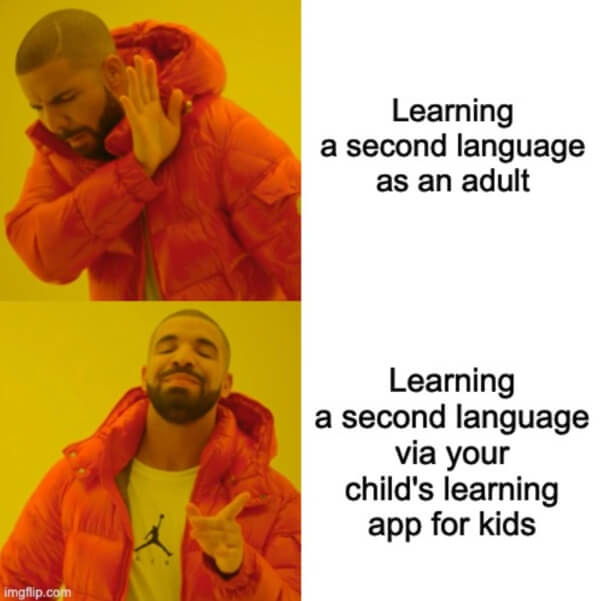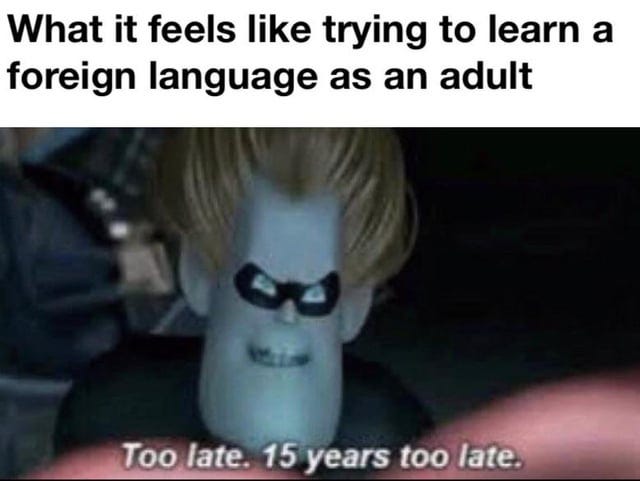Teaching children
Expanding your bilingual circle
Welcome, aspiring polyglot! With my own child on the way, I have been contemplating the question of teaching one’s own children more and more often. There are near countless methods, many of which come down to particular parenting styles. While I have my opinions on what is best, that will be a topic for a different time. For this I specifically wanted to address different ways that parents can work with their children, irrespective of language proficiency.
If it works for you
The older I get the more cognizant I am of the fact that most adults are just large children. Especially in a world where prolonged childhood seems to be the norm. While there are certainly many negative aspects to this, there is one resounding positive. Everything that works for you in your second language acquisition will also likely be beneficial for your children. At the end of the day, the brain works how the brain works.
Children may benefit from more neuroplasticity, but adults benefit from more reference points. Both require adequate stimulus and repetition in order to master anything, a second language in particular. Exposure is all that really matters. After all, most people learn their native language through exposure alone and, while this can cause problems with reading and writing later down the line, audio comprehension is a big thing to get out of the way early.
Depending on how long you have been studying languages, you will undoubtedly have come across countless methods and strategies for learning new things. Many of which likely did not work for you. It is important here, as the adult, to remember that just because something works for you does not mean that it will necessarily work for one or all of your children.
The same is true in the inverse. Just because something did not work for you does not mean it will not work for them. Take time to revisit things you have given up on and see if they are things that resonate with your children. There are many ways to reach the same destination, especially when it comes to learning a language. Do not box yourself into only one. More importantly, do not put such limits on the next generation you are now teaching.
Follow their interests
Almost every language teacher within the public system falls into the same trap. Teaching their own interests. As a parent, you are going to have to fight against this temptation. I understand it is tempting to share your interests with your children. Doing so in a new language, however, can be overwhelming and result in the child losing interest in both the topic and the language.
Of course, if you happen to share an interest then even better! That would be the best case scenario. Deepening your knowledge, bonding, and teaching/learning a new language together is an incredible way to spend time with your family. Just be prepared to be surpassed in skill level after enough time. While adults do have advantages in language learning, pure neuroplasticity cannot be beat.
When you are doing these things, you also have to avoid the second most common trap that teachers fall into: pretending you know everything. I get it. Admitting to your child that you do not, in fact, know everything is difficult. Language learning is a perpetual task, though. You may not need it now, but in a year or two or three you are going to need the credibility you lost when they found out on their own that you do not know everything.
Being open to looking for answers together will not only build trust, it will allow you to bond as you learn and grow together. If you need an excuse you can point to any number of cases where even English words are unknown to most people, including those who use them. Setting the expectation from the start that there will always be more to learn is never a bad thing.
Resource management
Since there will always be more to learn, building up a library of resources that you can always come back to will be key. Storing the information of everything you have used, keeping track of what you are using, and searching for new content will become a habit over time. In fact, after a while it becomes one of the more enjoyable pieces of setting up study sessions.
This is where a deep understanding of everyone’s interests will be the most important. Choosing incorrect content can render all of your effort meaningless as your children checkout immediately when it starts. The opposite is also true. If you choose well, you may struggle to pull your kids away from the material. Language acquisition, at its core, is and should be an enjoyable experience.
That said, variety is key. Too many times returning to the same thing and it will become too easy and therefore dull. You also run the risk of hyper specializing in one area. Though it could be interesting to know more about the olive harvest in Spain than 99% of the global population, it is also not very useful if your goal is to order food at a restaurant. Unless, of course, you are asking after premium olive oil.
The last thing you should keep in mind when you are creating a content library is that babying them, or yourself, will only hinder any potential progression. At first you will necessarily go slower and cover less material. As time goes on, though, every session should become more challenging. New vocabulary should be added daily, verb tenses should be added and worked on weekly, challenges should be completed monthly.
Everyone knows how difficult it is to learn a new language. What kids don’t know and cannot appreciate until it is too late is that the younger they are the easier it will be to learn a new language. Between the neuroplasticity and the lack of bills to pay, there will never be a better time. So it is incumbent upon you, the adult, to ensure they get the challenge they need. They will rise to meet you at the level you present. Do not make the mistake of taking it too easy out of fear of hurting them.
Conclusion
Language acquisition at any age is no easy feat. Bilingual children are just as impressive as bilingual adults. That isn’t a reason to teach your children a new language, though. The real reason to bother with all of this is because it will alter the trajectory of their lives in the best possible way. By giving them the gift of bilingualism you will unlock doors for them that they will not encounter for years, possibly even decades.
No one likes to be surpassed by their children in any skill. Language learning is where that pass can happen the quickest. For those who are working simultaneously with their children on language acquisition, it is even worse. Try to see it as a victory. Teaching your children is difficult, but you can do difficult things and become great. So get out and do some difficult things and become great. I am rooting for all of you.
Requests
If you have anything you would like covered you can reach out to me on X, Instagram, or at odin@secondlanguagestrategies.com.
Additional Resources
Don't want to spend time playing catch up? Pick up the 3 Months to Conversational book now available on Amazon! 3 Months to Conversational
For more long form content be sure to check out the website and the FREE Language Learning PDFs we have available!
Subscribe for new content on YouTube and TikTok!
Learning Spanish? We have begun aggregating resources in you Spanish Resource Newsletter!
Don't forget to pick up your very own French Language Logbook or Spanish Language Logbook








